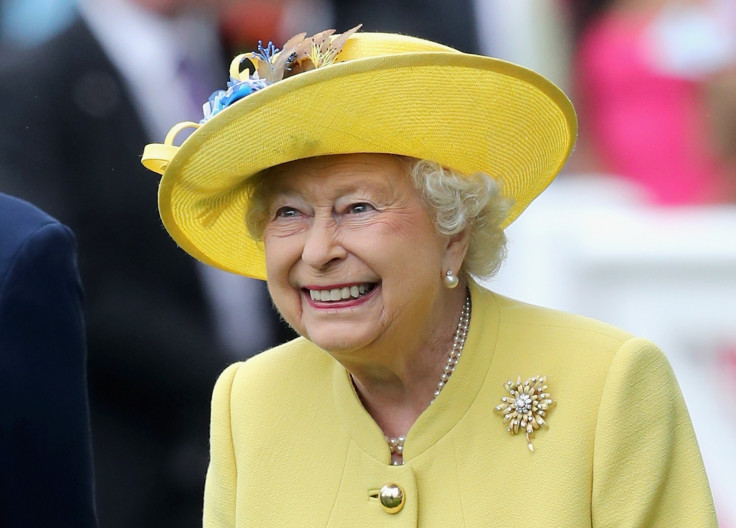Why does the Queen need £17.8m to support Britain's sprawling royal family?
Private income to Britain's monarch has mushroomed since the millennium

"What does she do with it?" was the irreverent title of a pamphlet written, but published anonymously, in 1870 by the radical Liberal MP Sir George Trevelyan, who gained notoriety for his campaign attacking the growing wealth of Queen Victoria. The same question might be posed today of her great-granddaughter after the disclosure on Thursday that Britain's Queen received a record £17.8m from the Duchy of Lancaster in 2015-16, an increase of 7.7% on last year's bumper profits.
Revenue from the Duchy – the ancestral estate that has for the last eight centuries provided a private income to the British monarch – has mushroomed by £12m since the Millennium. If the Queen could manage on £5.8m in 2000, why does she need £17.8m today?
Admittedly HM's outgoings are high, what with the maintenance fees of running two large country estates (Balmoral alone is estimated to haemorrhage £3m a year) and paying for a string of horses (normally 25 are in training at the royal studs), but these costs are relatively constant. What has grown is her family.
More than likely the Queen's Lancaster hotpot is used to feed her hungry brood of children – particularly Princes Andrew and Edward who maintain an expensive lifestyle without any discernible salary. No doubt Princess Anne also receives a helping or two from her mother in return for fulfilling official engagements.
This family cross subsidisation dates back to 1992 when after a shake-up of the royal finances it was agreed that annuities from the Civil List would be limited to Prince Philip and the Queen Mother and that the Queen would effectively self-finance the royal duties of her other close relatives. In the early nineties the bill amounted to around £1.5m; today – with the deaths of Princess Margaret and the Queen Mother being more than offset by the arrival of new royals - it is sure to be far higher.
With the Queen looking set to live as long as her centenarian mother, there are now grandchildren and great-grandchildren to provide for and given that her mother and father are known to have set up trusts for their close family members, it is likely that Her Majesty has done the same – and at some cost.
Such family generosity would be impossible without the Duchy of Lancaster, the long-standing wellspring of the Windsor wealth. When the Queen acceded to the throne in 1952, its revenue was a modest £100,000 pa. It grew broadly in line with inflation for several decades reaching £3.75m in 1992 but the big push came in the decade after the Millennium when with commercial rents skyrocketing it doubled to more than £13.2m in 2010.
All this belies the old worldly Ruritanian image that the Duchy likes to project from its annual report with images of turreted castles and ancient coats of arms. In truth it is a lean property agency with 17 employees managing some extremely valuable real estate, the jewel in the crown being the Savoy estate in London's Strand between Somerset House and the Savoy Hotel which returns a king's ransom in office rents. In total the Duchy's assets are now worth almost half a billion pounds.

Over the decades the British parliament have laboured to get to grips with the estate's finances. The income it delivers to the monarch is regarded as private, but is the capital—which cannot be accessed by the monarch due its trust-like status—public?
And if so, shouldn't it be subject to parliamentary scrutiny like other public assets? Insistent that it is "a private estate," Duchy officials have long been loath to open up the books to parliament's financial watchdog, the National Audit Office.
This indeed was one of the recommendations of the Public Accounts Committee when it investigated the Duchy of Lancaster (as well as the Duchy of Cornwall) in 2005. The report also called for an assessment of how well its profits corresponded to the actual needs of the Queen's household.
In a damning phrase it argued that the income was "an accident of history" stemming from arrangements established in the 14<sup>th century which might not be appropriate today. Although not mooted by the committee, one modernisation move might involve capping the profits: in other words, setting aside an index-linked sum of, say, £5-6m for the Queen's private income and returning the remainder to the Treasury.
Since the report's publication over a decade ago the Duchy's profits have more than doubled. Dare one ask - at the risk of committing lèse-majesté - if the Queen is receiving far more than she requires?
David McClure is author of Royal Legacy (Thistle Publishing 2015). Follow him on Twitter: @davidjmcclure
© Copyright IBTimes 2024. All rights reserved.






